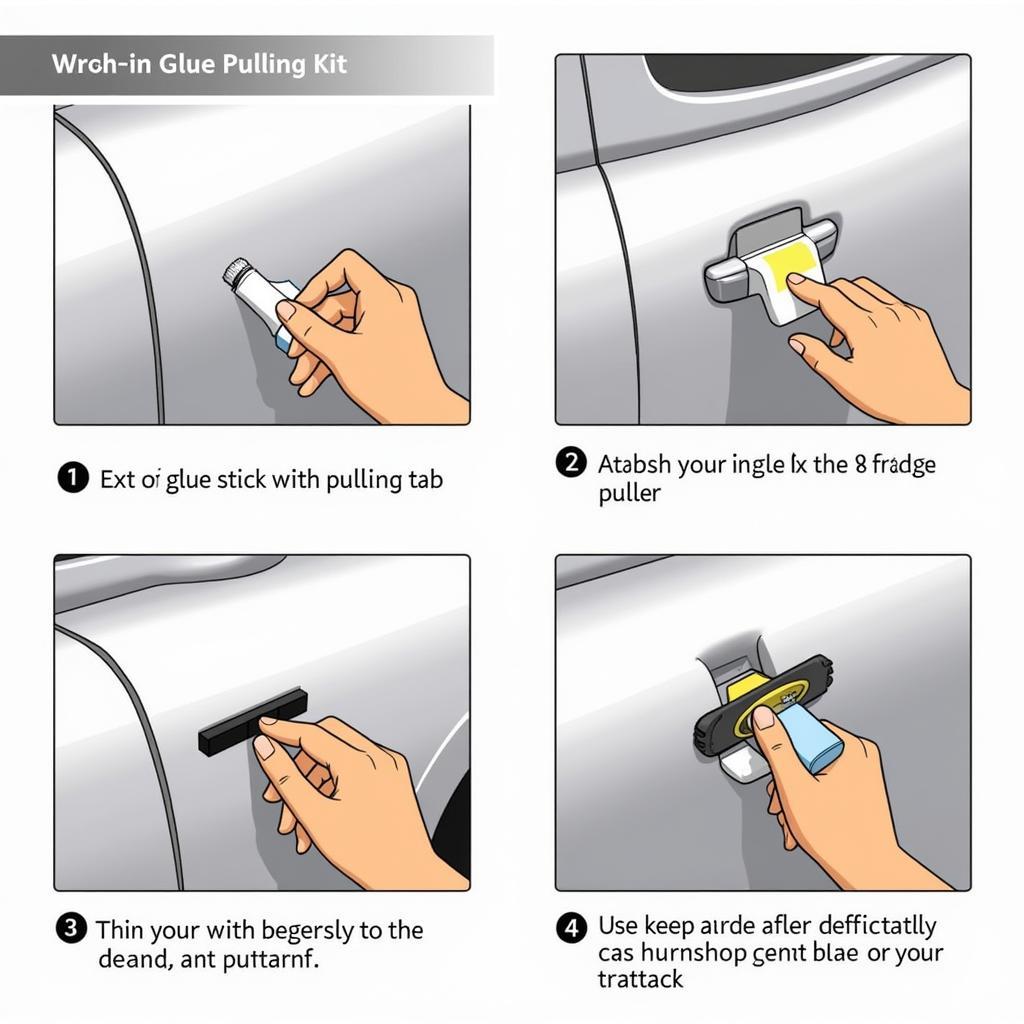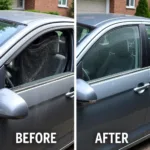Fixing minor dents and dings on your car yourself can save you a trip to the body shop and a significant amount of money. A car body dent repair kit offers a practical and often effective solution. Understanding the types of kits available, how they work, and their limitations will help you choose the right one for your needs. Let’s delve into the world of DIY car dent repair.
A car body dent repair kit is designed for minor dents and dings, not major collision damage. These kits typically utilize principles of suction or leverage to pull the dent back out. They’re an affordable way to address those unsightly blemishes and potentially maintain your car’s resale value. Considering the different types of kits and their suitability for various dent types is crucial for successful repair. Selecting the appropriate kit and understanding the repair process is key to achieving professional-looking results.
Types of Car Body Dent Repair Kits
Several types of car body dent repair kits cater to different dent sizes and locations. The most common are glue pulling kits, suction cup dent pullers, and slide hammer dent puller kits. Each has its strengths and weaknesses. Choosing the right one depends on the specific dent you’re dealing with. Knowing when to consider professional repair is equally important. For a specific type of dent puller, you might consider a car body dent repair tool kit t puller, which offers more leverage for stubborn dents. Check out our guide on car body dent repair tool kit t puller for more information.
Glue pulling kits, for instance, are excellent for smaller dents and often come with a variety of glue sticks and pulling tabs. Suction cup dent pullers, on the other hand, are simple to use and ideal for shallow dents on flat surfaces. More complex dents might require a slide hammer dent puller kit, offering a more robust pulling force.
 Using a Car Body Dent Repair Kit on a Car Door
Using a Car Body Dent Repair Kit on a Car Door
How to Use a Car Body Dent Repair Kit
Regardless of the kit you choose, the basic principle remains the same: to gently coax the dent back to its original shape. The process requires patience and careful execution. Rushing the process can worsen the damage. You might be interested in our article on argos car body repair kit for specific product recommendations and user reviews.
Preparing the Damaged Area
Clean the dented area thoroughly with soap and water, then dry it completely. Any dirt or debris can interfere with the adhesion of glue or suction cups.
Applying the Pulling Force
Depending on the type of kit, you’ll either attach a glue tab or a suction cup to the dent. Then, apply gentle pulling force using the provided tools. Avoid excessive force, which can create further damage. Looking for a suction-based solution? Our page on car body repair kit suction provides a comprehensive overview.
Finishing Touches
After pulling the dent, you might need to use a finishing tool to smooth out any remaining imperfections. This step requires careful attention to detail. The goal is to restore the surface to its original condition. Sometimes, minor paint touch-ups might be necessary. If you’re in London and need professional assistance with scratches, you might want to check out car body scratch repairs london.
When to Call a Professional
While car body dent repair kits are useful for DIY repairs, they’re not suitable for all situations. Severe dents, creases, or damage to the paintwork often require professional attention. Knowing when to seek expert help is essential. For information on repairing plastic car parts, see can plastic car body parts be repaired.
Conclusion
A car body dent repair kit is a valuable tool for tackling minor dents on your car. By choosing the right kit and following the instructions carefully, you can achieve satisfactory results and save money. However, it’s important to recognize the limitations of these kits and seek professional help when necessary. Understanding the different types of car body dent repair kits and their applications will empower you to make the best decision for your car’s needs.
FAQs
- What types of dents can a car body dent repair kit fix? Generally, small to medium-sized dents without creases or paint damage are suitable for DIY repair.
- How long does the repair process usually take? Depending on the dent size and complexity, the repair can take anywhere from 30 minutes to a few hours.
- Are these kits suitable for all car types? Most kits are designed to work on standard steel and aluminum panels.
- What if the dent doesn’t come out completely? Sometimes, multiple attempts or a different type of kit might be necessary. If the dent persists, consider professional help.
- Do I need any special skills to use these kits? Basic DIY skills are sufficient, but patience and attention to detail are essential.
- Can I use a car body dent repair kit on plastic bumpers? Results may vary. Refer to the kit instructions and consider alternative methods for plastic repair.
- Where can I buy a car body dent repair kit? Auto parts stores, online retailers, and even some hardware stores sell these kits.
Need help with car diagnostics or repair? Contact us via WhatsApp: +1(641)206-8880 or Email: [email protected]. Our 24/7 customer support team is ready to assist you.

